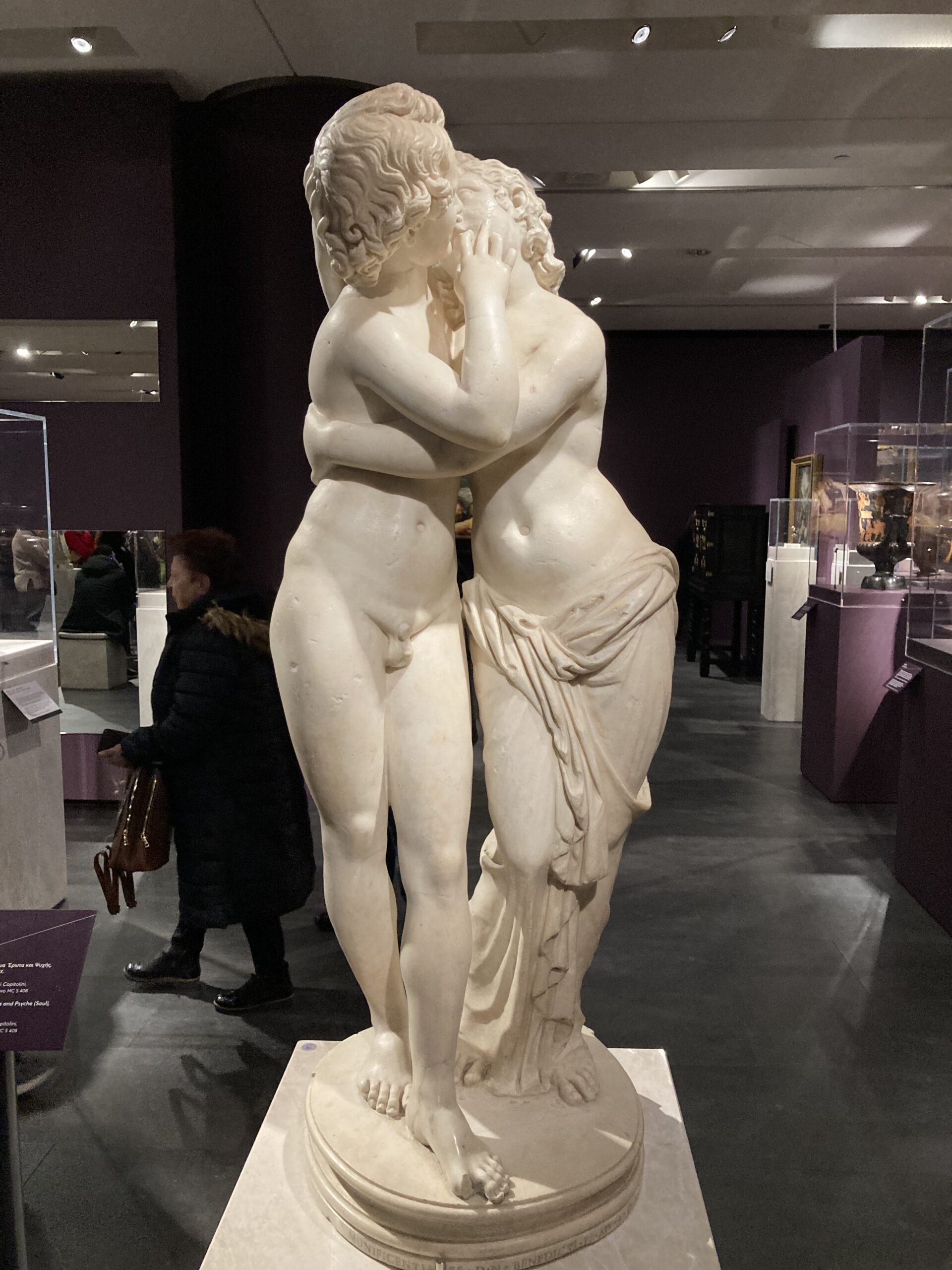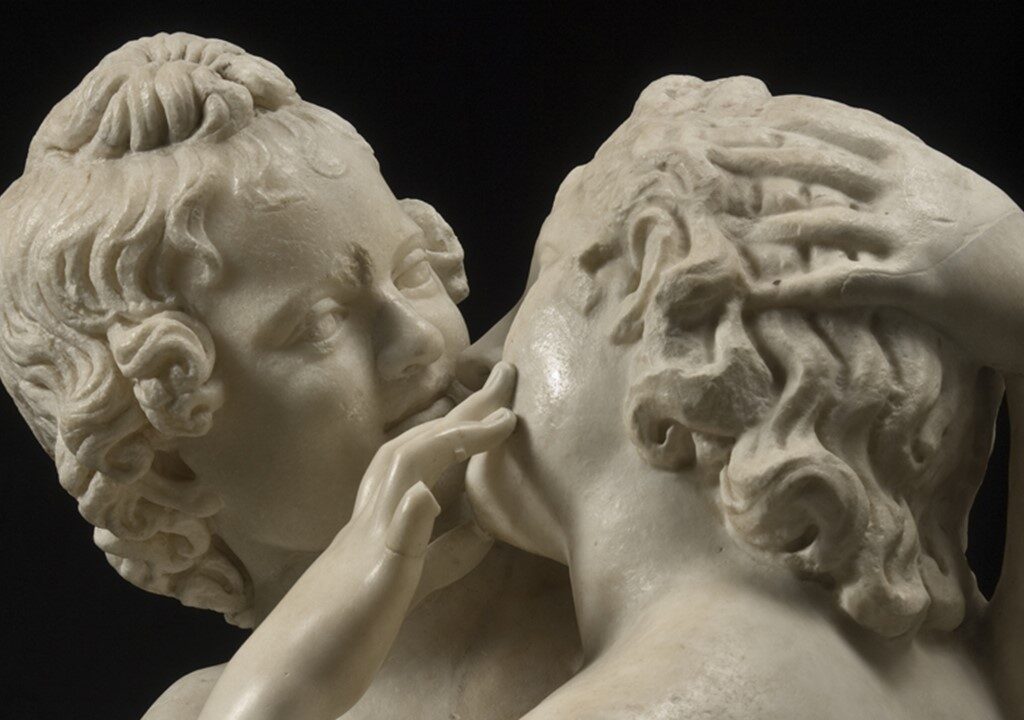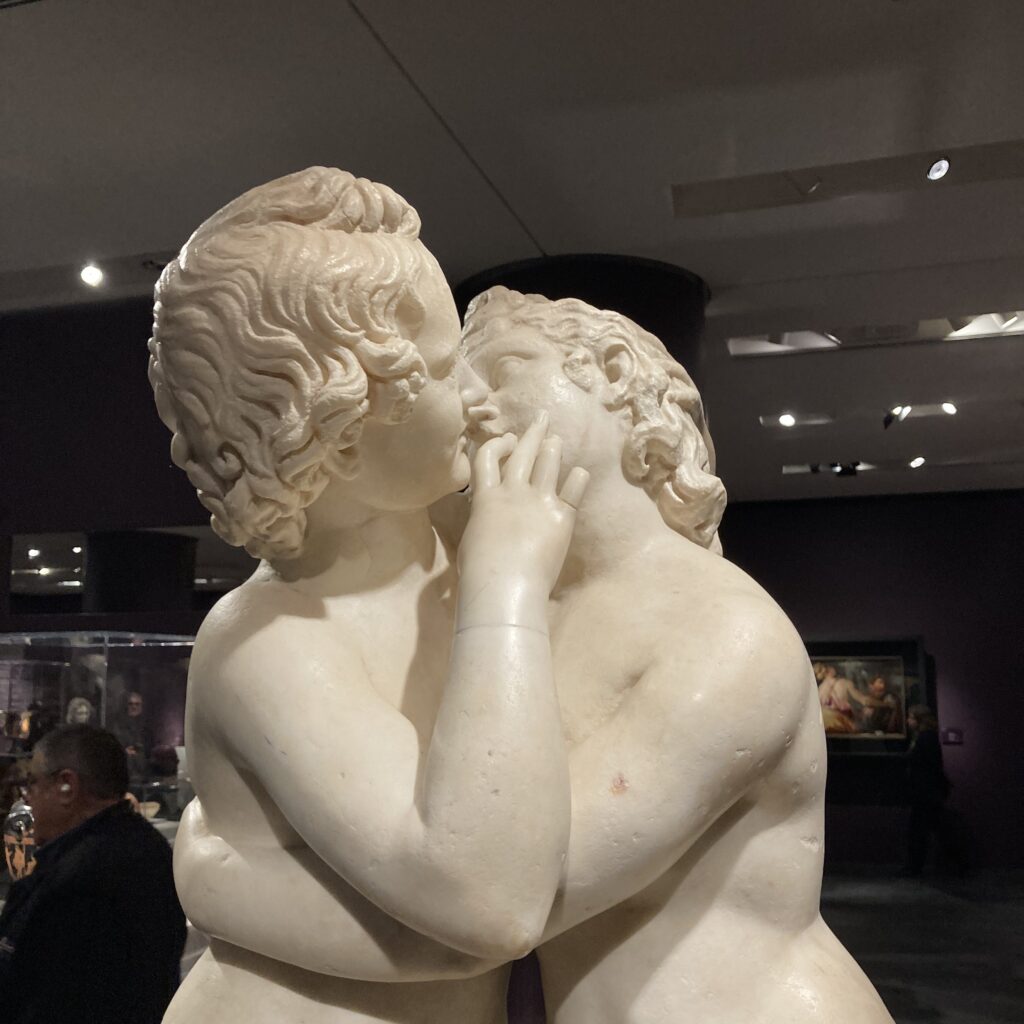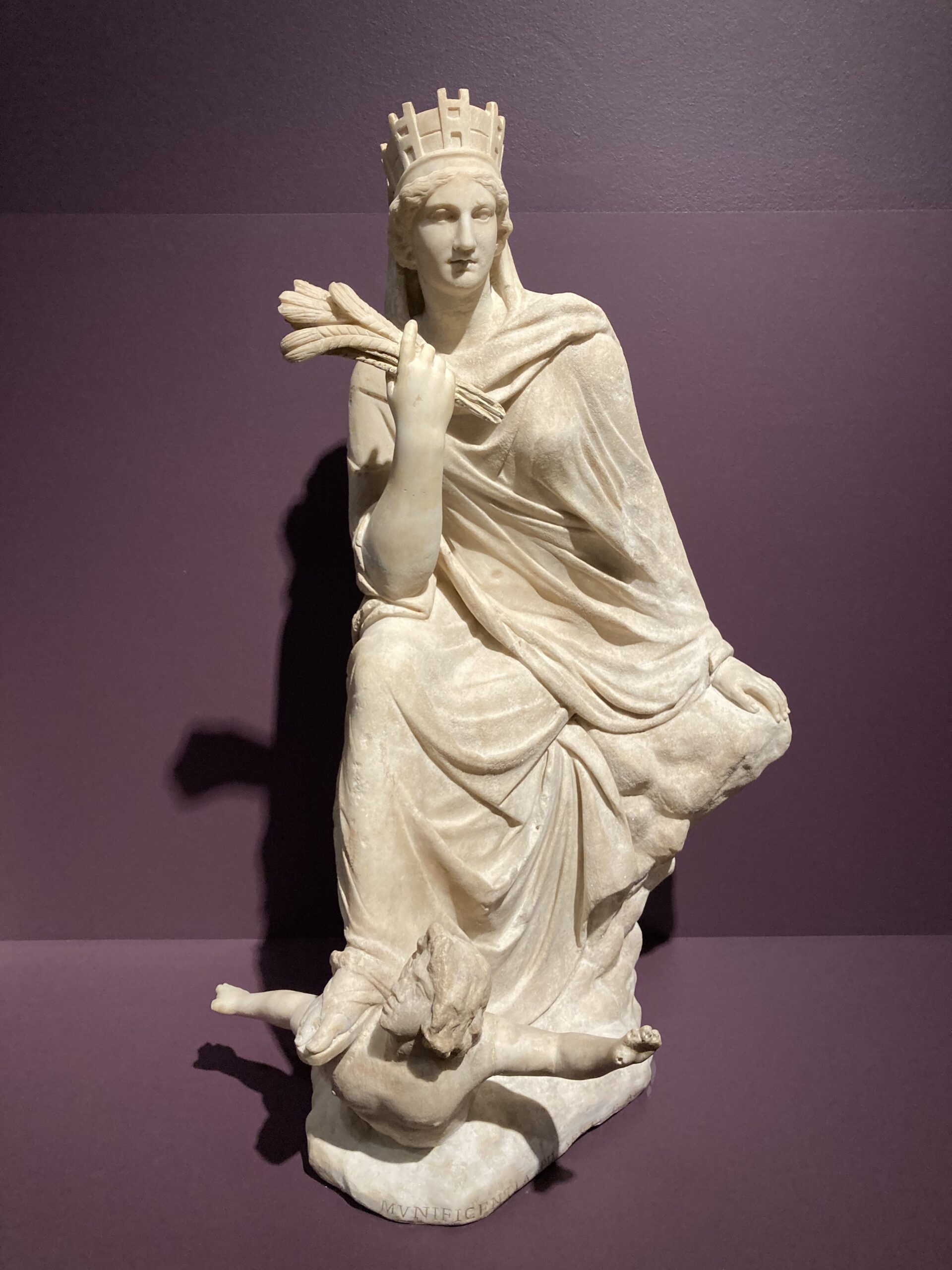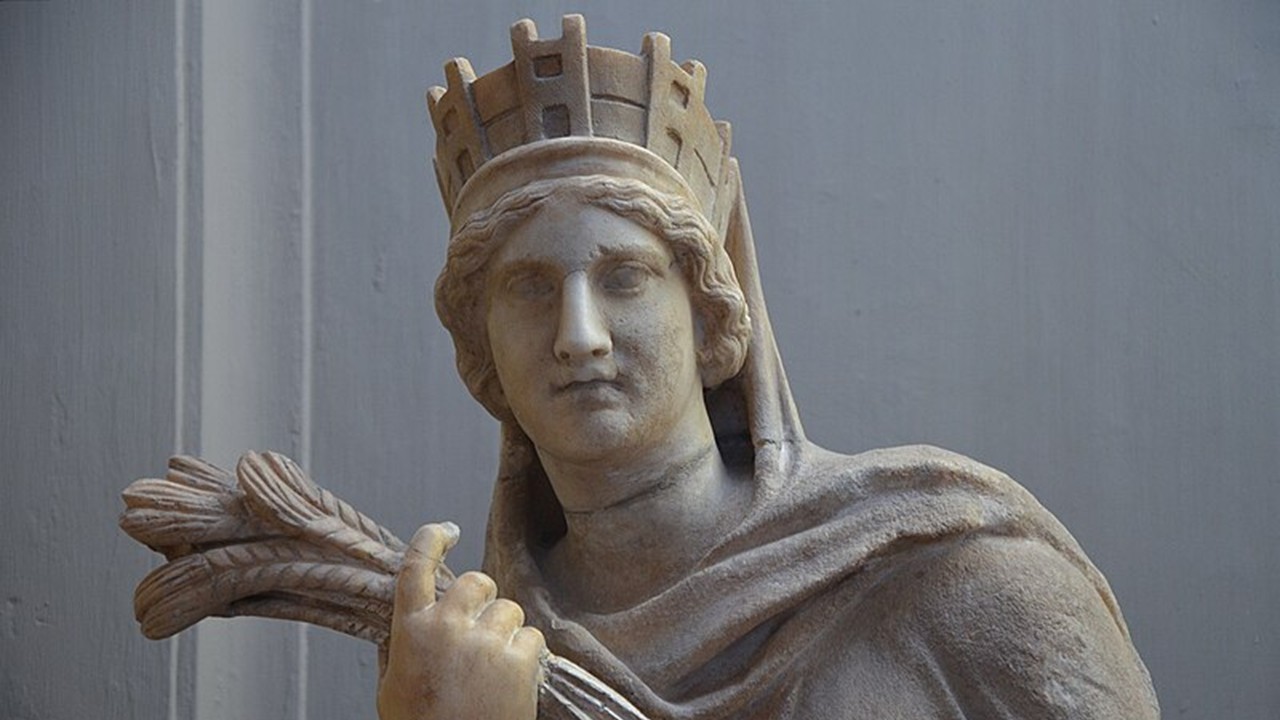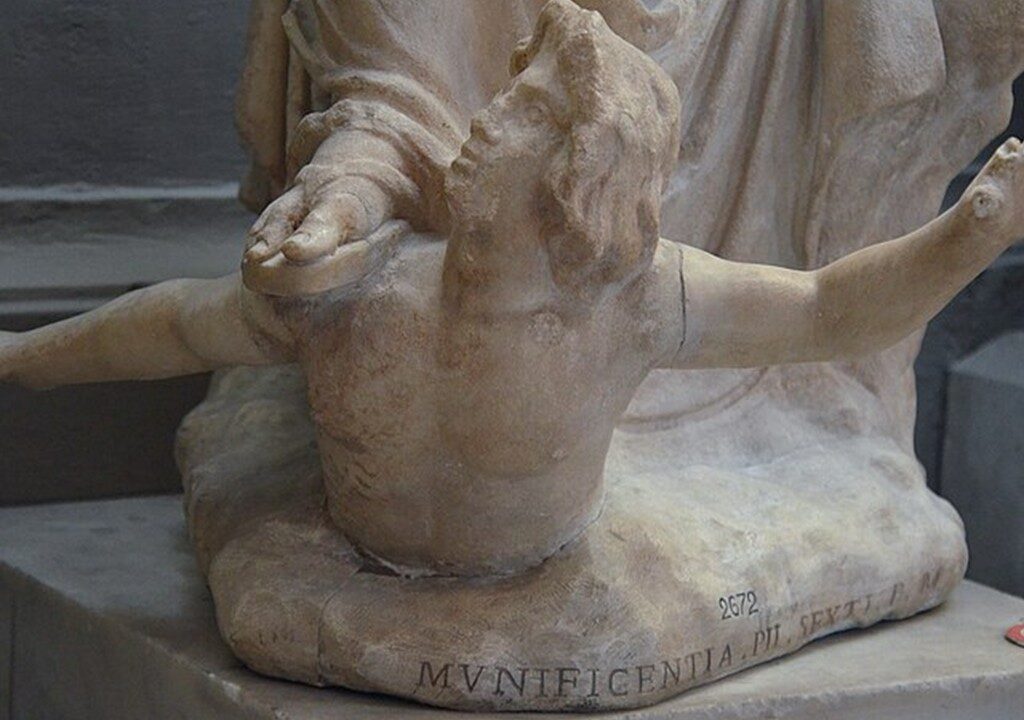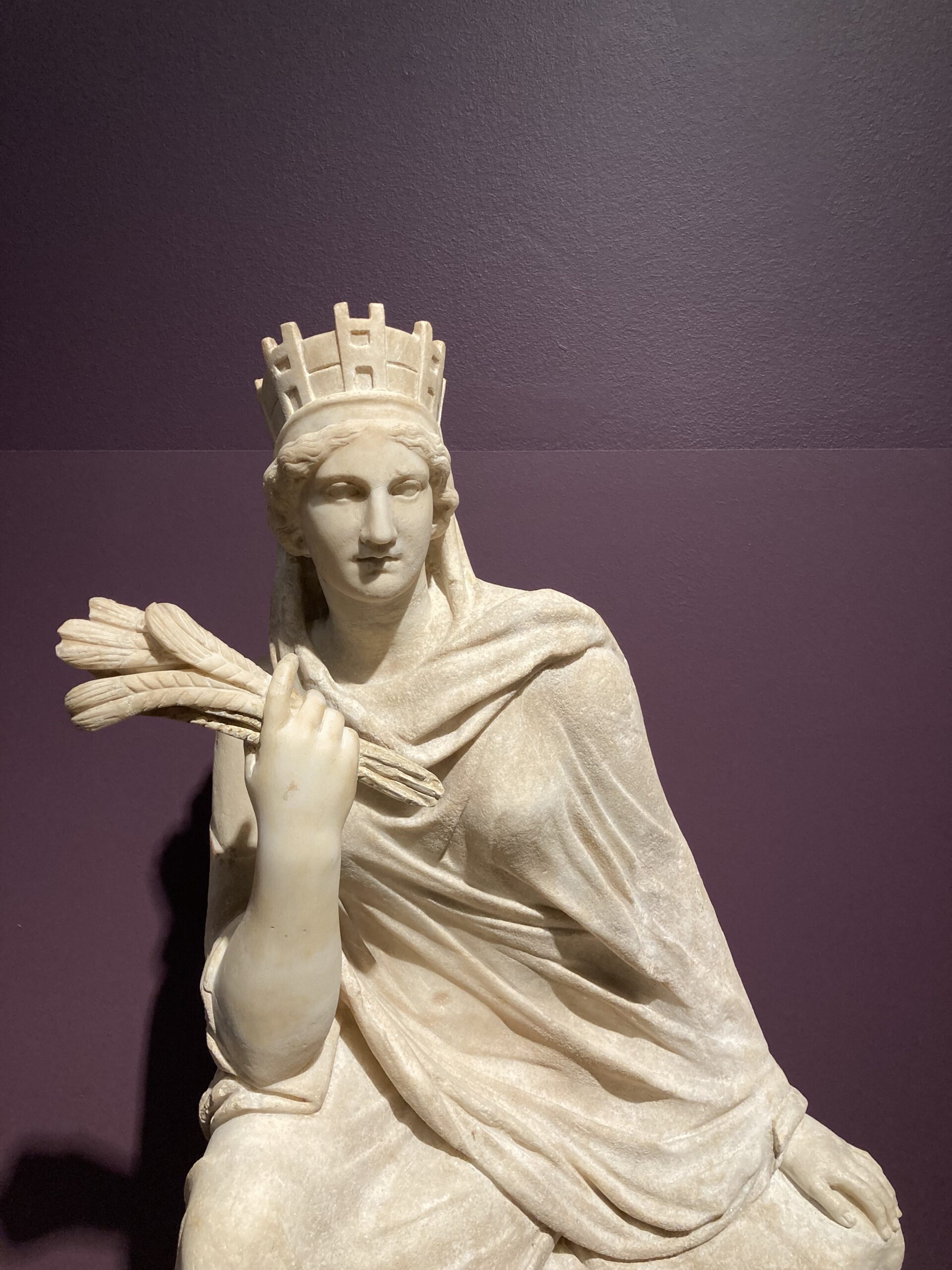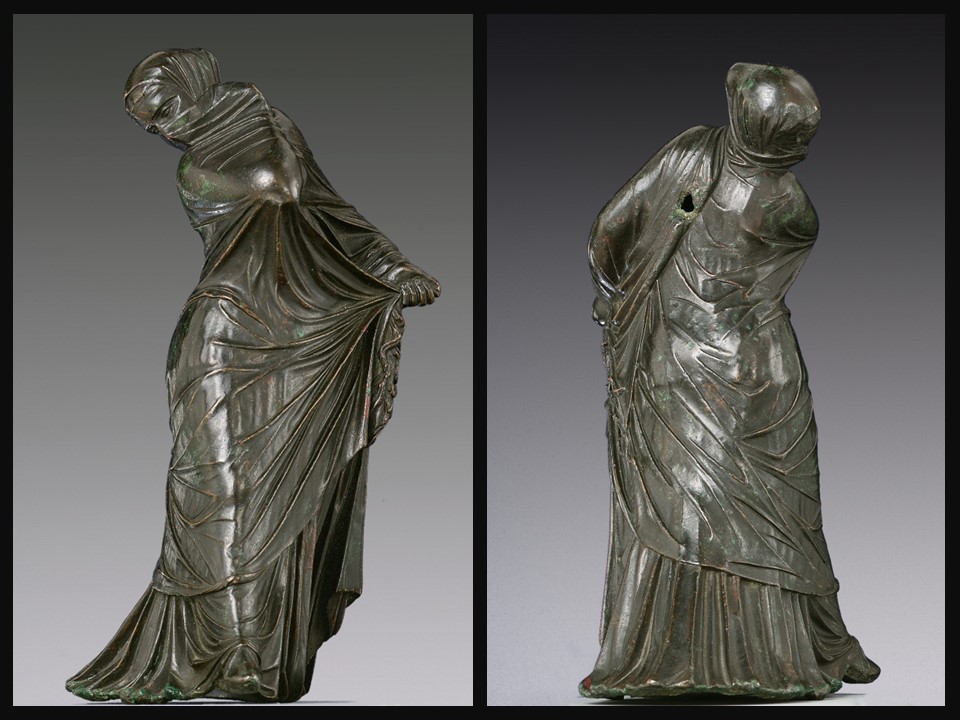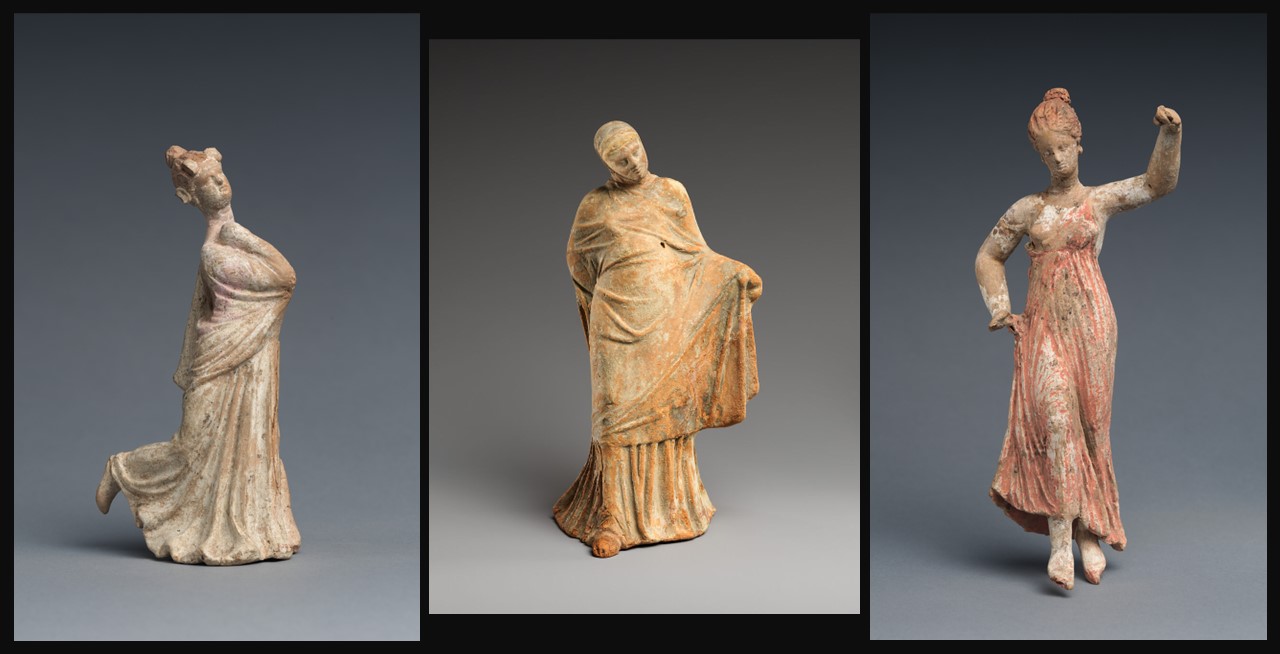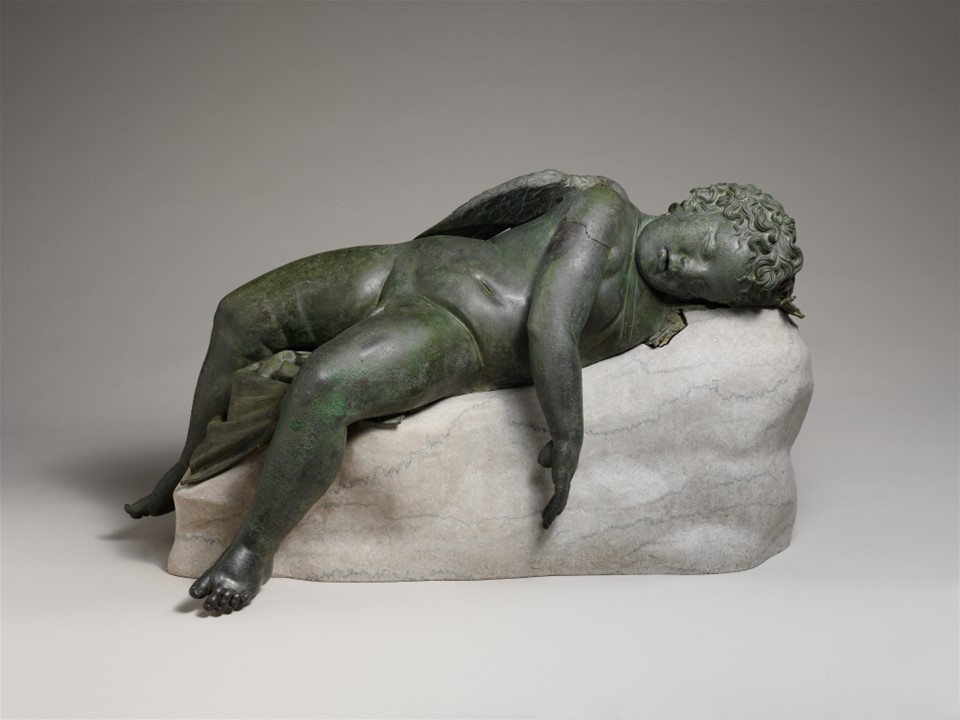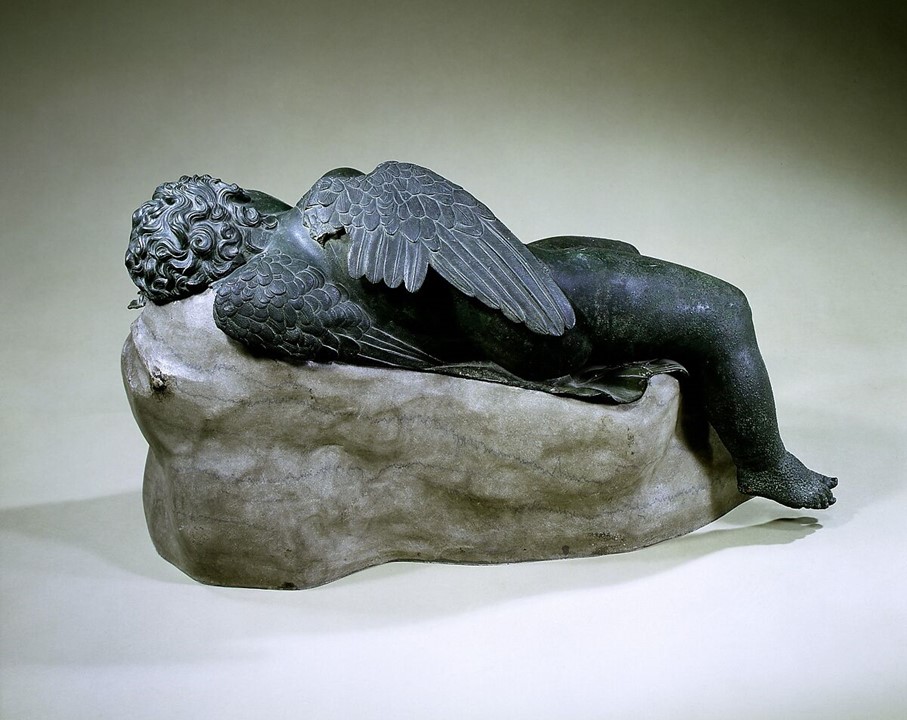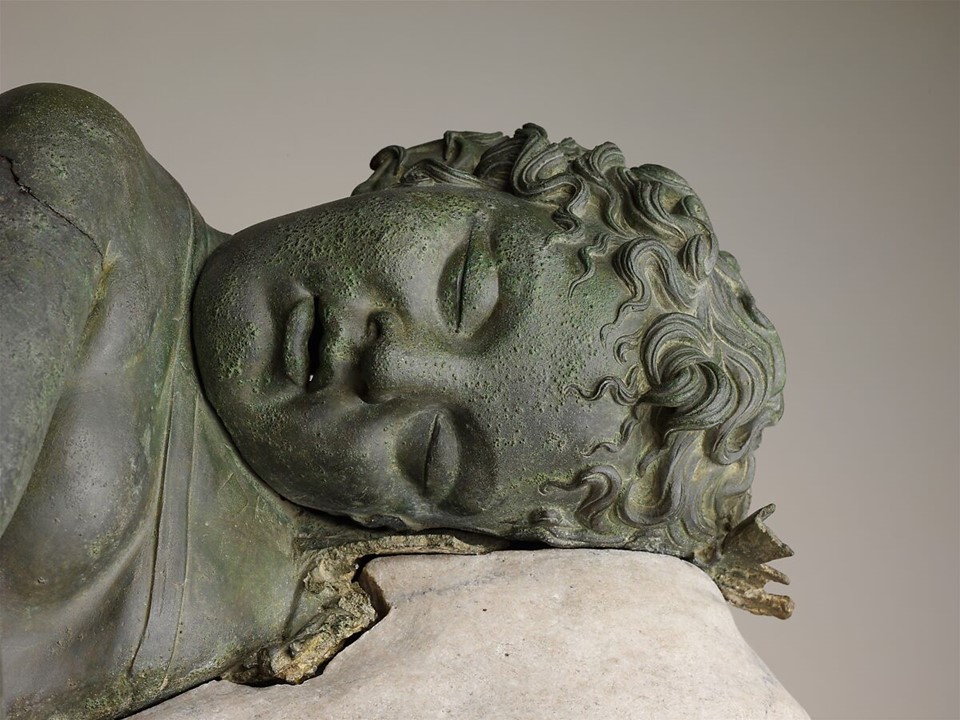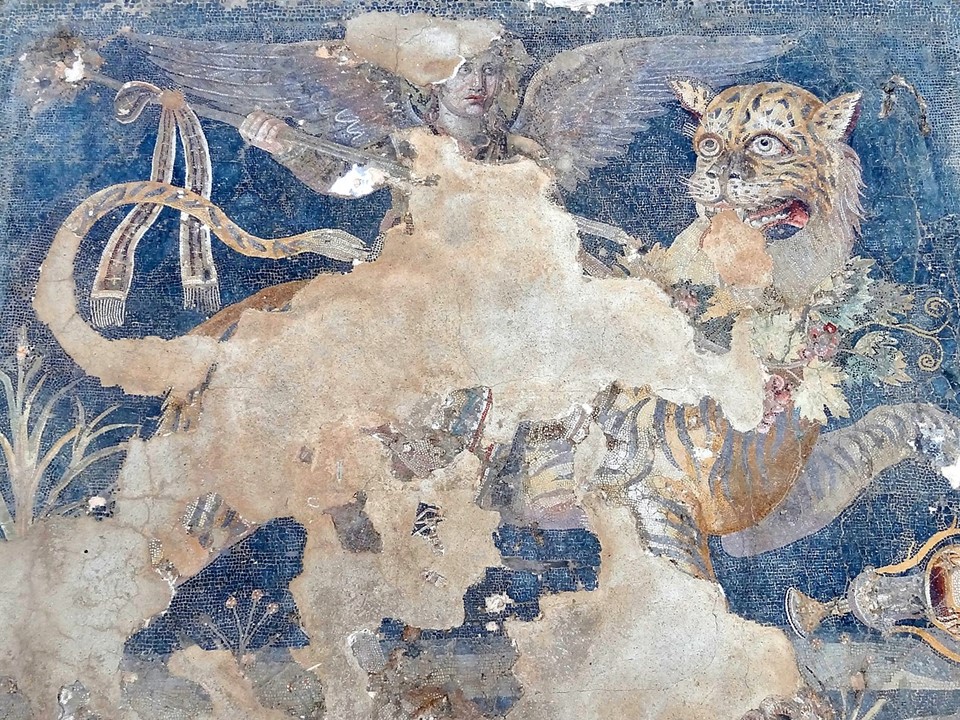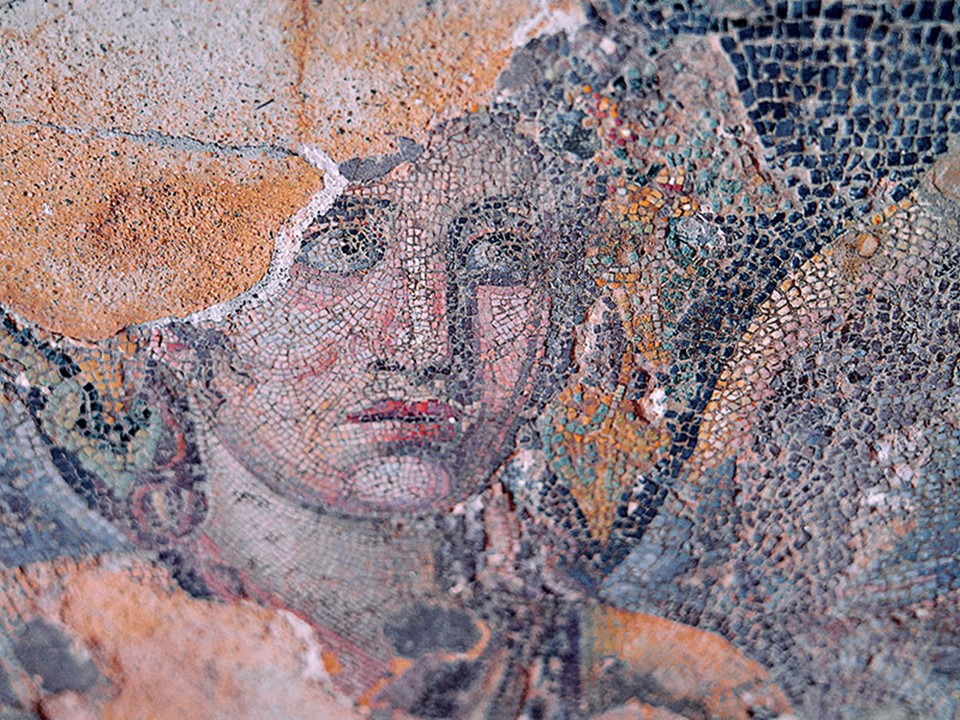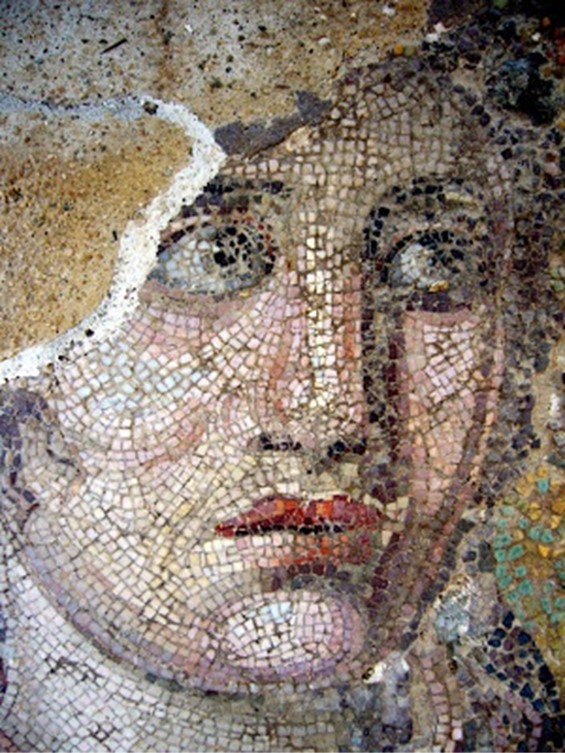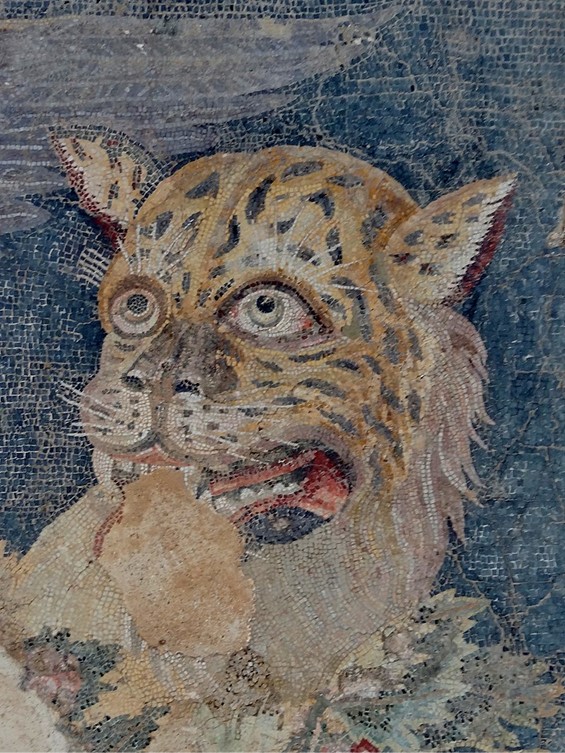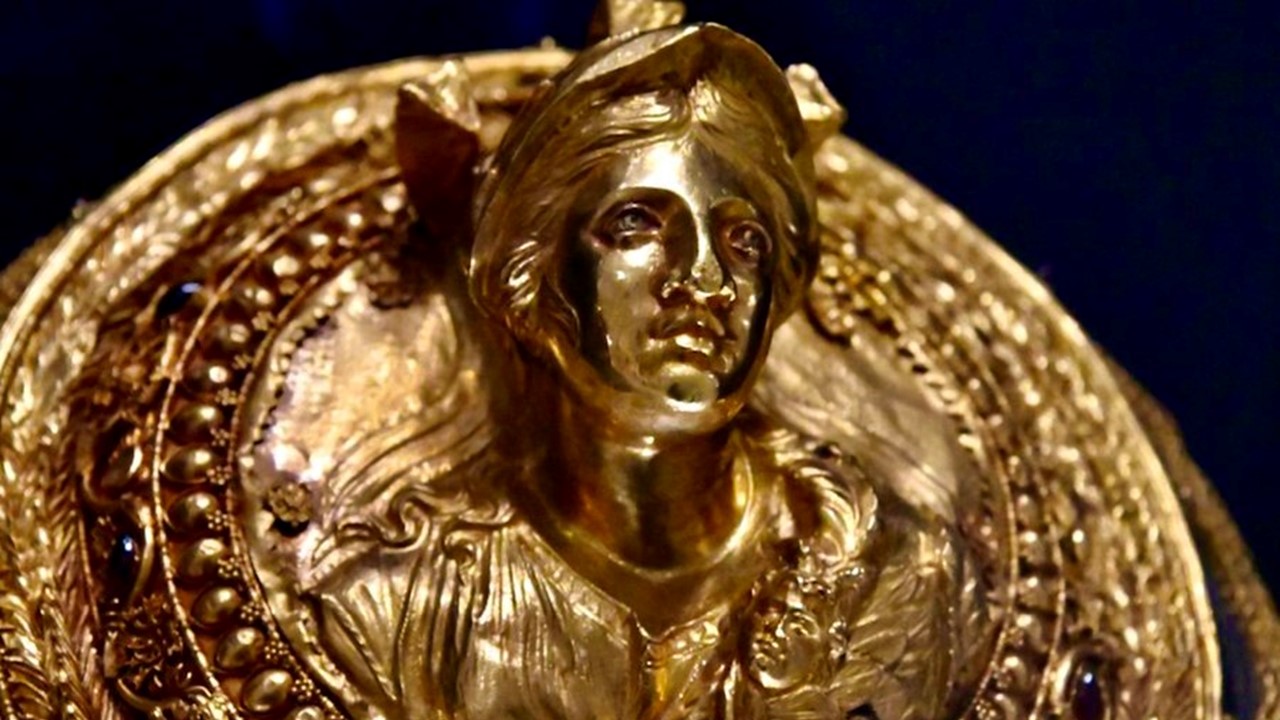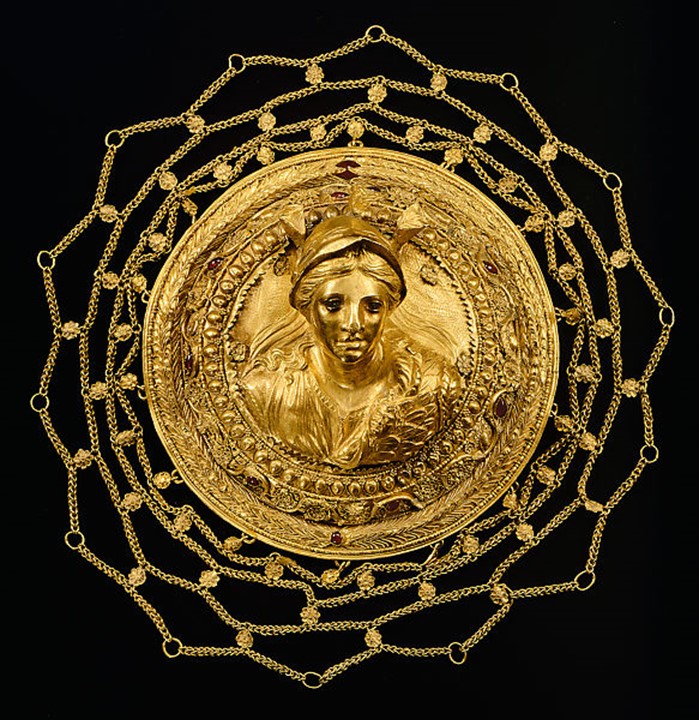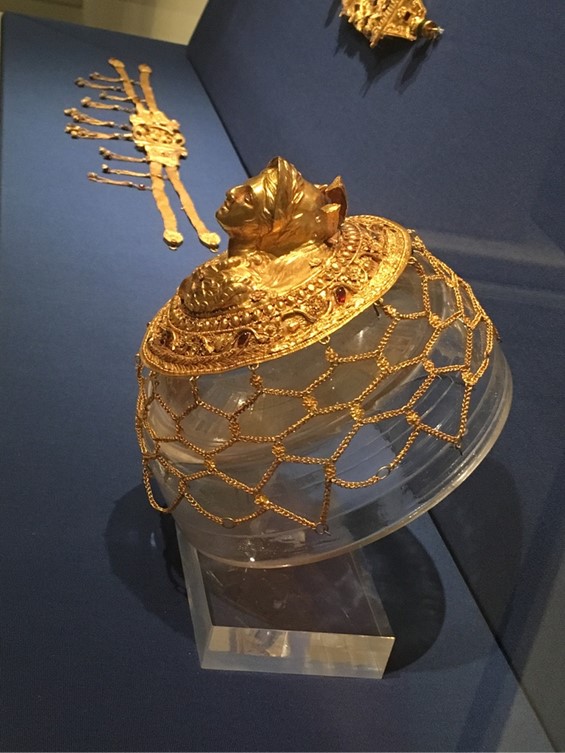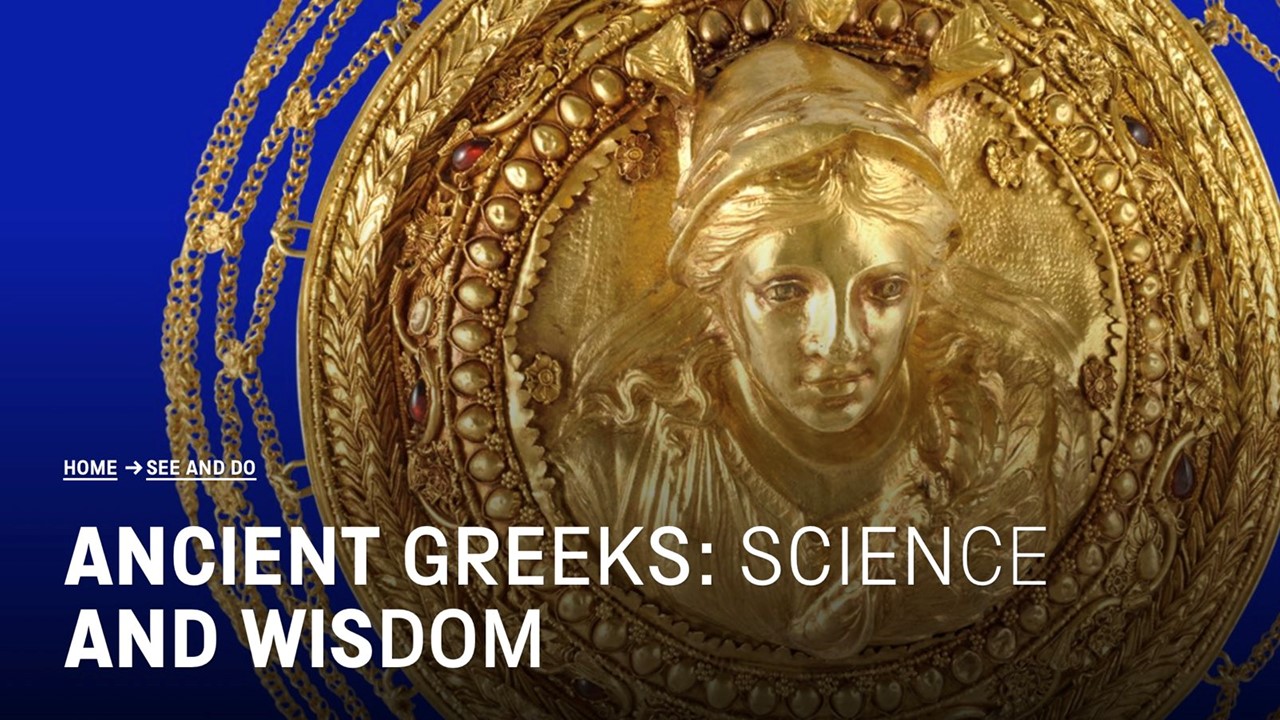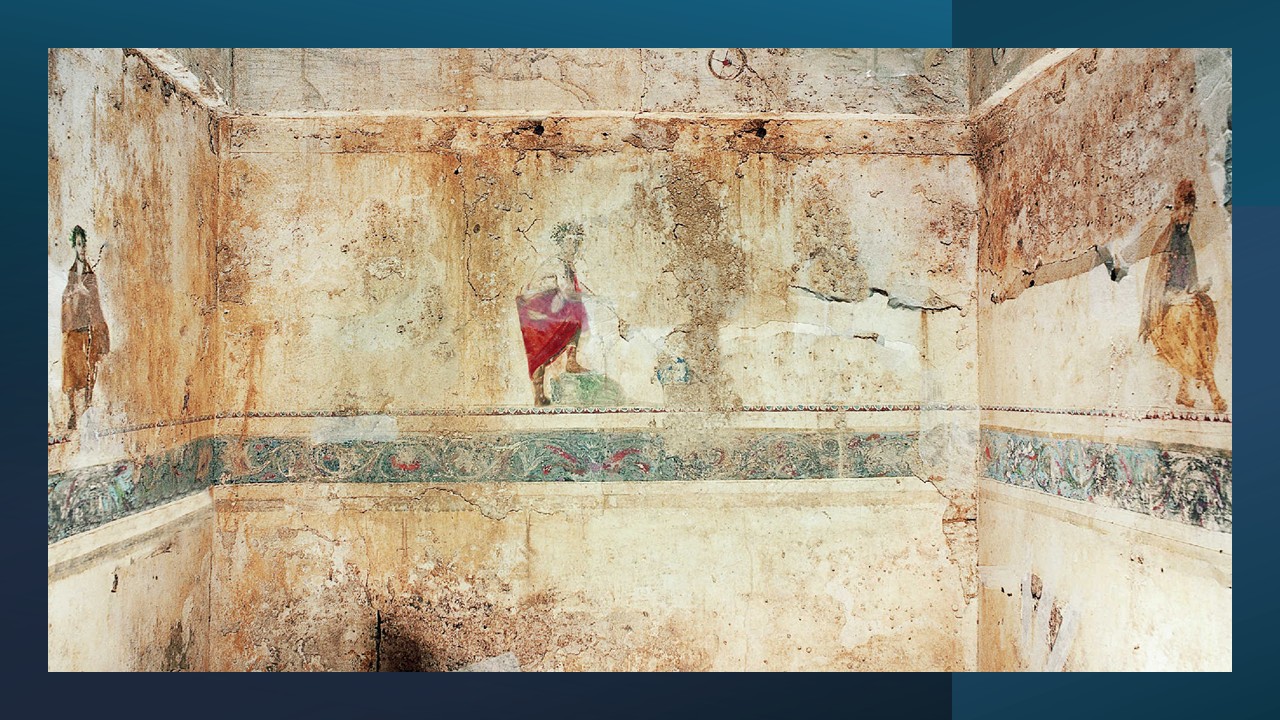
West Wall: Main figural frieze showing a man in a red himation with a wooden rod, pointing at a blue globe. North Wall: On the right side of the photo, a bearded man is depicted, absorbed in reading a papyrus roll. South Wall: On the left side of the photo, another wreathed, bearded ‘philosopher’ is vividly presented.
https://www.palaceofpella.gr/ancient-pella-the-areas-and-the-monuments/?lang=en
Nestled in the heart of ancient Pella, the Tomb of Philosophers stands as one of the most remarkable and enigmatic funerary monuments in Greece, dating back to circa 300 BC. As one of the largest cist-graves ever discovered, its unique decoration sets it apart from any other known ancient tomb. The six figures depicted on its walls, reminiscent of later Roman gatherings of philosophers, provide the earliest known portrayal of an intellectual tradition that links Pella’s vibrant cultural life to the Late Classical period. Among these depictions, a celestial globe suggests the deceased may have been a philosopher with an interest in astronomy or a patron of intellectual pursuits. Above them, scenes of horsemen and grave steles evoke Homeric funeral games, connecting the tomb to the epic, heroic past. The tomb’s intricate design and profound symbolism reflect the high level of cultural and intellectual development that defined ancient Pella, where philosophy and the sciences were integral to a humanist education.
Let’s explore the ‘who’, ‘where”, ‘when’ and ‘what’ of this amazing Hellenistic tomb by posing some questions!
Where is the Tomb of Philosophers located in ancient Pella? The Tomb of Philosophers is located in the ancient city of Pella, which was once the capital of the Macedonian Kingdom in northern Greece. Pella is situated in the region of Central Macedonia, approximately 40 kilometers west of modern-day Thessaloniki. Located in the region of the so-called Eastern Cemetery of Pella, the Tomb is situated just outside the city’s eastern walls. This area, used for burials from the mid-4th century BC until the early 1st century BC, became a principal necropolis following Pella’s major expansion in the late 4th century BC. The Eastern Cemetery is notable for its diverse funerary architecture, with cist graves being a predominant feature. These graves, often arranged in clusters and surrounded by enclosures with sculpted monuments, reflect the wealth and social complexity of the era. The Tomb of Philosophers (the burial chamber is 4.40 m long, 1.95 m wide and 3.00 m high) stands out among these for its exceptional decoration and significance, providing insight into the intellectual and cultural achievements of ancient Pella during its peak.
What is a Cist Tomb? A Cist Tomb is a type of ancient burial structure characterized by its box-like design, typically made of large stone slabs forming the walls, floor, and roof, or sometimes constructed with wood. These tombs were often hewn directly into rock or built within shallow pits and were commonly used for single or multiple burials. Frequently found in ancient cemeteries, cist tombs often contained grave goods such as pottery, jewelry, or personal items meant to accompany the deceased into the afterlife. In Pella’s Eastern Cemetery, Cist Tombs were a prominent feature, reflecting the wealth, social status, and cultural sophistication of the individuals buried within them.
Who was the owner of the Tomb of Philosophers located in ancient Pella? The owner of the Tomb of Philosophers in ancient Pella remains unknown, but the burial context offers intriguing insights. The tomb contained the remains of three individuals: a man in his forties, a woman in her thirties, and an infant. These findings suggest it was a family grave, likely serving as a resting place for multiple generations. The assumption that the family members died at different times aligns with the practice of reusing cist tombs over years, a common custom in ancient burial traditions. The artistic and intellectual significance of the tomb, combined with the presence of elaborate frescoes and symbolic elements such as a celestial globe, suggests the family belonged to the intellectual or social elite of Pella. The man, given the philosophical themes of the tomb, may have been a scholar, astronomer, or patron of knowledge, while the woman and infant reflect the familial connections integral to the tomb’s purpose.
What is depicted in the frescoes decorating the Tomb of Philosophers? The frescoes decorating the Tomb of Philosophers in ancient Pella are a testament to the intellectual and artistic sophistication of Macedonian society during the late Classical and early Hellenistic periods. The walls of the tomb feature a combination of architectural elements, ornamental motifs, and elaborate figurative compositions. These decorations reflect the philosophical and cosmological interests of the time, with the main iconographic theme centered around figures of literati or philosophers. The most striking element is a deep blue sphere depicted on the west wall, symbolizing celestial and cosmological themes, likely influenced by Aristotelian teachings and works like Aratus’s Phaenomena, written in Macedonia during the poet’s time at the court of Antigonus II Gonatas.
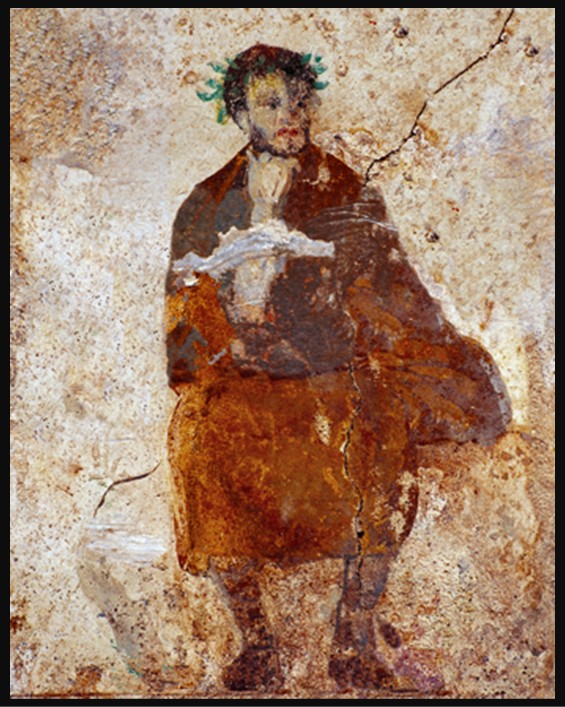
https://x.com/ancientorigins/status/1585557691497418753
It is interesting to note that the Tomb frescoes illustrate the blending of symbolic and decorative elements to convey both personal identity and cultural values. The use of deep blue tones, floral patterns, and heroic imagery like galloping horsemen suggests a connection to both intellectual and heroic ideals. These visual elements not only commemorate the deceased but also serve as a testament to the vibrant intellectual and artistic achievements of ancient Pella, offering valuable insights into the social, philosophical, and aesthetic priorities of the Macedonian kingdom.
When was the Tomb of Philosophers discovered? The Tomb was unearthed in 2001 by the 17th Ephorate of Prehistoric and Classical Antiquities of Greece, under the leadership of its then-Director, Maria Lilimpaki-Akamati, alongside her team of collaborators.
For a PowerPoint of frescoes preserved in the Tomb of Philosophers in ancient Pella, please… Check HERE!
Bibliography: https://www.palaceofpella.gr/ancient-pella-the-areas-and-the-monuments/?lang=en and https://ejournals.epublishing.ekt.gr/index.php/tekmiria/article/view/36631/27647 and https://www.latsis-foundation.org/content/elib/book_18/pella_gr.pdf pp 185-186
